Featured Articles
#MayPac: The Impossible Waltz
“I wanted to give the fans what they wanted to see – they wanted to see a toe-to-toe battle. Fans don’t want to see me moving. They want to see me coming forward, so that’s what we did tonight.”
This is Floyd Mayweather talking to Larry Merchant after his 2010 mismatch with Shane Mosley. Merchant had made his first question about the perceived abandonment by Mayweather of his “defensive genius.”
In truth, Mayweather had done no such thing, but he had changed as a fighter and this was the night upon which it became apparent. Mayweather “retired” in 2007 after two glorious moving performances against Oscar De La Hoya and Ricky Hatton, and upon his comeback had matched Juan Manuel Marquez, who he dwarfed. Mayweather spent much of that fight inching forwards or holding ground but he was both the bigger man and the puncher in that fight so his apparently aggressive approach looked natural. But against Mosley he was expected to move.
Everything you might have said about him had he done so could still be said – he was too fast, too quick and too clever for a stumbling Shane Mosley, past-prime but coming off a very impressive win over Antonio Margarito. But he did not move, or to be more precise, he did not fight a moving fight. Even the fighter’s own claim that he “boxed the first couple of rounds” must be called into question as Mayweather and Mosley repeatedly bumped up on the inside, Mayweather even contesting some of the clinches and to the surprise of many his newfound post-retirement size and strength made him far from the victim Mosley’s ruggedness was expected to make of him there. A new reality unfolded: even while he eschewed in disdain Mosley’s body as a target, Mayweather himself had become more available for the jab to the body than at any other time in his career. The payoff was a direct route to Mosley’s head and jaw, which Mayweather filled with punches throughout.
In round two, Shane Mosley hit Mayweather with a right-hand which remains the hardest punch Floyd has ever taken in his ring career. Mayweather was rattled but did not budge; he remained in range, he invited Mosley to the pocket, and allowed his opponent to tag him with another right hand before the round was out. The best mover of his generation had been hit with the hardest punch of his career and left his bike parked at ringside. Mayweather Mark II was born in that moment.
I was sad about this at first. The world is full of fighters who stand their ground and fight but boxers like the one that destroyed Diego Corrales way back in 2001 are incredibly rare. Mayweather was electric, eclectic, using every inch of canvas until Corrales was in control of exactly none of it, giving up square feet and then inches in a gradual easement that was almost otherworldly; that placed him, it seems to me now, nearer the tower inhabited by the likes of Roy Jones and Ray Robinson than the streets where earthbound pugilists swarm.
That argument is for another day though. What interests us now, in the light of the thunderclouds gathering on Mayweather’s horizon in the shape of a perpetually aggressive southpaw, is the recent history of the man they call Money. In shorthand, after Mosley, Mayweather made the most lavish living in all of sports doing what people liked to say he couldn’t do in 2003, namely beat a series of welterweight and light-middleweight pressure fighters in the pocket. Of course he still moved, but his movement was typified now by economy; against Robert Guerrero especially he maintained an exquisitely tight circle, turning his opponent often, inviting him to punch, countering him but just as often throwing out leads in short squabbles over territory that inevitably ended in Mayweather’s favour. Mayweather has written an old tune with his commitment to arbitrary rather than patterned head and upper-body movement but he has taken the song and made it his own. Certainly it wasn’t the steady ground that he gave that baffled Canelo Alvarez in 2013, a shrewd flooding of the space behind him which worked well in bringing the numbed Alvarez steadily forwards, but rather the sudden egress when he allowed Alvarez to catch him that was the difference in that fight. In the sixth he suddenly filled the space he was narrowly vacating with every variety of right hand that can be named, and the fight as a contest was over.
His fight with Cotto, and the first with Marcos Maidana were a little more troubling. In both of these contests Mayweather was, for the first time since the adoption of his new style, pressed. This was not the same as his being buzzed by that chopping Mosley right, this was consistent and direct pressure brought by opponents who believed in their style and their chances, Cotto because of his size and strength, Maidana because of unfettered surety in his own aggression. It would be a gross exaggeration to say that either man came close to beating him, but Mayweather looked uncomfortable.
Against Maidana, especially, Floyd was handled for spells. The Argentine came for him two handed with his head up the middle, which is not to imply that Maidana was butting Mayweather but rather to say that he was brave enough to place his head in a position that made it likely that he would be hit but that eliminated one plane of movement for a Mayweather escape – keep in mind now that I am speaking not of his employing his legs, but rather head and upper body movement. Mayweather couldn’t dip because he would have been driving his face into Maidana’s skull. If he went straight back into the ropes, Maidana would naturally gain space into which he was leaning, again, dangerous, but the brave and the correct decision.
Mayweather elected to hold his ground once more. This was the fight that really called out for a moving strategy; it would have rendered what ended up being a close decision win for Mayweather a rout. Maidana did not have the science or the physical abilities necessary to keep up with the Floyd Mayweather that destroyed Corrales, or even the one that narrowly out-pointed De La Hoya. But still he did not move, still he stayed in the pocket, weaving, tilting, perhaps barely outlanding a fighter that threw around twice as many punches as him and roughed him up in the process. If we could believe Mayweather Senior when he claimed that fighting rather than boxing had been the plan against Mosley, we could not believe that here. Mayweather neglected to move against Maidana not because he wouldn’t but because he couldn’t.
Mayweather’s legs have gone.
When I say “gone”, I don’t, of course, mean “gone”. George Foreman had “no legs” when he won the world’s heavyweight title. A fighter without legs isn’t incapable of movement but rather is incapable of controlling the tempo of the fight with movement.
For a fighter like Foreman Mark II, this is no disaster. He can maintain pressure by shuffling forwards and eating punches, hoping for the chance to land that dream shot. But for a fighter like Mayweather it should have been a total disaster. History tells us that a fighter losing his legs is inevitable and that, in the case of the mobile defensive genius, it signals the end of his career. Ivan Calderon is the best example in recent history. Belatedly admitted to the various pound-for-pound lists published on the internet and elsewhere, he was already past-prime when he became well known to boxing fans. Although he sported quick pistols and fluidity in pulling the trigger, it was footwork that set Calderon apart for the five years he boxed as the best little-man on the planet. When his legs betrayed him he was finished and even against a fighter as limited as Moises Fuentes, who battered him into submission in his very last fight, he was chanceless, sinking sadly to his haunches and accepting the count.
Time moves fast for a fighter who trades on speed of movement and it catches up to every boxer of this style. Even the great Willie Pep was forced to take a knee when his feet couldn’t keep him ahead of the merciless Sandy Saddler. Roy Jones, in turn, was tracked down and destroyed by Glen Johnson, a wolf he would have slaughtered in a previous life but one he could not keep from the door once his legs had betrayed him.
Cast your mind back to the opening paragraph of this article for a moment if you will. Larry Merchant asked Mayweather:
“Floyd…why did you turn yourself from – a defensive wizard into an offensive force?”
And Mayweather replied:
“I wanted to give the fans what they wanted to see – they wanted to see a toe-to-toe battle. Fans don’t want to see me moving. They want to see me coming forward, so that’s what we did tonight.”
A more honest answer would have been, “I’ve got to give the fans what they want to see. The fans won’t see me moving again for twelve rounds because I can’t do it. Sometimes, I’m going to have to come forwards. That’s what we did tonight.”
What Mayweather, like Muhammad Ali before him, has recognised, is that there is another way. Ali knew years before he employed the rope-a-dope against George Foreman that he would have to look for another solution to the fifteen round championship distance, that he couldn’t, even in his prime, dance a 215lb machine around the ring for fifteen rounds. His solution was the ropes, a lot of absorption, an uncanny ability to read punches and a fabulous ability to pick and land counterpunches.
Floyd, like Ali, has endured a period of inactivity prior to which he was the best mover of his generation, and like Ali he has returned to the ring without that mobility. What Ali and Mayweather have both recognised is that control is everything; and if you can’t control the ring with your legs control it some other way. Against Foreman, Ali gave his opponent everything he wanted. Big George came to that ring to walk Ali down and force his (by the standards of the day) old legs into surrender. So Ali gave him exactly what he wanted from the second round and took advantage of the over-exuberance in the “destroy” portion of the “seek and destroy” equation that Foreman personified. Mayweather has done the same thing. He has chosen pressure fighters because he knows he can control them; because he knows at any given moment where they will be and that is front and centre, missing him, and getting hit with counterpunches.
But his legs have still gone. If he could adopt a moving strategy, we would have seen it by now. The maximum he can offer was on display in Mayweather’s last fight, the rematch with Maidana, won by Floyd at a canter as he took measures to ensure he would only intermittently have to fight off the ropes: narrow relaxed steps and a fast clinch when his back touched the top strand. Even this modest commitment to mobility seemed to have a price as Mayweather threw a measly 326 punches according to Compubox (netting him just under 100k a punch), far and away his lowest total ever recorded over twelve rounds. Any physical activity is a balancing act. Running is a balancing act between the legs and the lungs; boxing is a balancing act between movement and fighting, acted upon externally by the opponent. In fights where he punches instead of moves, Mayweather can still toss out over 600 punches as he did against Miguel Cotto. In selecting recommitment to movement to some small degree against Maidana he limited his output severely. Nor is it a matter of contact, a matter of movement keeping him away from the combat zone. Against De La Hoya, Mayweather spent the whole fight moving and threw almost five-hundred punches. This is an exquisite rendering of a fighter past his prime, perched perfectly on the cliff edge it is his destiny to fall from should he go on too long.
Now, finally, enter Manny Pacquiao stage left. Pacquiao himself is many years removed from the 1,000 punches he threw against Joshua Clottey but he is still a destroyer. He is still, on paper, the exact type that would be expected to slaughter a defensive genius forced to adapt to new realities. A hard puncher with an awkward style, he looks every inch Sandy Saddler to Mayweather’s Willie Pep. And yet Mayweather is an overwhelming favourite to win their contest come May 2nd.
Why?
It’s the question that burned for me from almost the moment the fight was made. At first, I was nodding along with those predicting an easy points victory for Mayweather. Sure, why not? He had the clear style advantage all those years ago when the fight was really hot, and although both were past their prime, Manny, still re-gathering himself after a hideous knock out defeat at the hands of Juan Manuel Marquez in 2012, was even more so. But when the fight began to broil under the obsessed eye of the media and I began to check out of the endless coverage I also began to wonder.
Manny wants to forage. He wants to stand just out of range hustling, feinting, dipping, and then bursting forwards into the pocket, firing. In 2008, the likely outcome would have been a slip, a slide, a counter, then a shuck or a step with a right-hand lead to kiss Pacquiao goodbye before sliding back out into some other quarter of the ring. The style advantage then belonged to Mayweather.
Now when Manny forages the likely outcome will be a slip, a counter but then a bump or a clinch or a shoulder-role and a possible exchange. That, to me, sounds like the style advantage now belongs to Pacquiao.
There has been some questions as to who the puncher will be in this fight. Pacquiao has not stopped an opponent since Miguel Cotto in 2009 and Mayweather’s new found strength at 147lbs has impressed many, not least of all me. But this question is neither here nor there in trying to unpick their respective strategies. The question that matters is who wants to initiate the exchanges? To whose advantage are exchanges in this fight? Because it is impossible for Manny to win if output is low, the answer is clearly “Pacquiao”. If, in fact, Mayweather can outpunch him he will still lose, but because there is no opportunity here for him to outbox Mayweather, that unpleasant fact (should it be one) will not affect either man’s strategy.
To sum up in a line: there will be more exchanges in this fight than there would have been in 2008. On paper that narrows the odds in Pacquiao’s favourite.
The stunning knockout of Pacquiao by Marquez and the inevitable diminishing of his punch output has turned the wheel of public perception too far in Mayweather’s direction in my opinion. If Mayweather moves more than he wants to, his engine will suffer and his output will likely drop to somewhere around 400 punches. I don’t think this is necessarily enough to get him over the line. On the other hand, if he elects to stand his ground as his Mark II stylistics have called upon him to do, I would expect him to throw more than five-hundred punches at Pacquiao – which is enough to get the job done but forces him into exchanges with the remnants of the best offence of this generation. Both options contain risks; both options allow Mayweather to exert control over the action – but I believe the first option probably carries the greatest risk of defeat, and that Mayweather who has become, against all the odds, one of the great ring pragmatists, will favour the second option. I expect Mayweather to fight Pacquiao almost exclusively in the pocket in the second two thirds of the fight. He’ll redress the situation with movement on occasion when he starts to feel uncomfortable as he did against Miguel Cotto; we are not going to see Pacquiao machine-gun Mayweather with punches at his age, meaning a Maidana style mauling is off the cards – unless Freddie Roach and Manny Pacquiao believe a decision to be an impossibility and decide to go for the early stoppage – but for the most part these two are going to spend a great deal of this fight on the edge of exchanges.
My guess is those exchanges will still favour Mayweather. Everyone has been hitting Pacquiao with right hands in recent years, up to and including Chris Algieri, who repeatedly landed a scuffing version of the punch on Manny as he swooped in. Although Algieri had to go to the body to land many of his meaningful rights, Mayweather has perhaps the best right-hand in the business. He will land it often and flush. On the other hand I expect Mayweather to be able to ride, deflect, crowd and step out on most of Pacquiao’s best work. Who, when really thinking about it however, can deny that Pacquiao will, like the past-prime Mosley, have his past-prime moment? In days of Mayweather past the vanishing act in the following round would have been complete, but if Pacquiao hurts Mayweather – when Pacquiao hurts Mayweather – the next three-hundred seconds of combat will be waged in the pocket, the best infighting offence of this generation let loose upon the best defensive infighter of this generation.
That is what is happening May 2nd and I hope it is not just Pacquiao who can gather to himself the praise deserved should he find a route to victory. Mayweather too must be credited, as one of the few defensive geniuses to have relied primarily upon mobility to cement his greatness but survive the departure of that mobility against one of the genuine destroyers of his era, for all that the destroyer was once upon a time a better fighter.
And a final thought – for all that this match might have been fought on a higher plane in 2008 I suspect it would also have been less entertaining.
I would stop short of predicting war, but a taught and hurtful battle is in the offing, I think.
The winner will join Roy Jones and Pernell Whitaker among the pantheon of true modern greats.
-

 Featured Articles4 weeks ago
Featured Articles4 weeks agoAvila Perspective, Chap. 330: Matchroom in New York plus the Latest on Canelo-Crawford
-
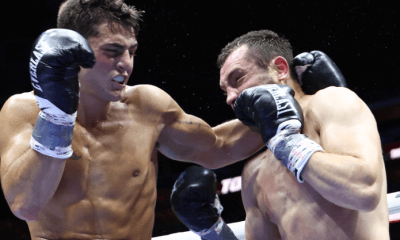
 Featured Articles3 weeks ago
Featured Articles3 weeks agoVito Mielnicki Jr Whitewashes Kamil Gardzielik Before the Home Folks in Newark
-
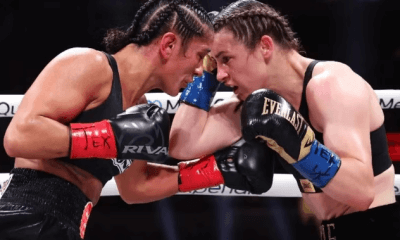
 Featured Articles1 day ago
Featured Articles1 day agoResults and Recaps from New York Where Taylor Edged Serrano Once Again
-
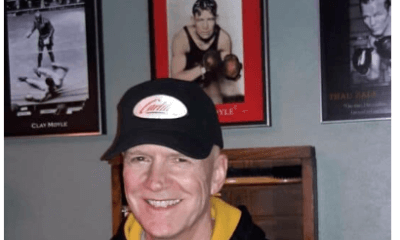
 Featured Articles4 weeks ago
Featured Articles4 weeks agoCatching Up with Clay Moyle Who Talks About His Massive Collection of Boxing Books
-
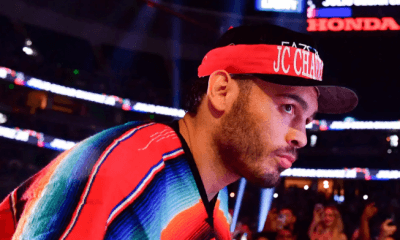
 Featured Articles6 days ago
Featured Articles6 days agoFrom a Sympathetic Figure to a Pariah: The Travails of Julio Cesar Chavez Jr
-
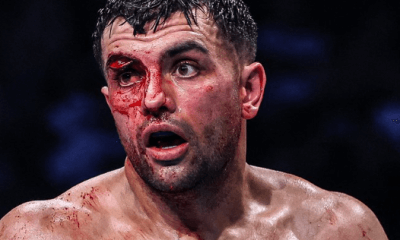
 Featured Articles1 week ago
Featured Articles1 week agoCatterall vs Eubank Ends Prematurely; Catterall Wins a Technical Decision
-
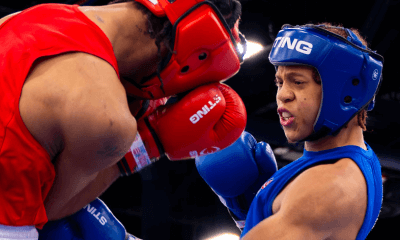
 Featured Articles3 weeks ago
Featured Articles3 weeks agoMore Medals for Hawaii’s Patricio Family at the USA Boxing Summer Festival
-
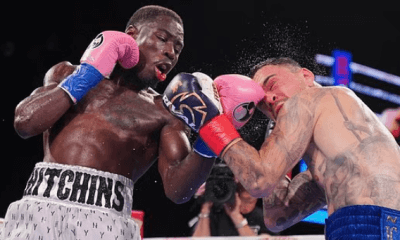
 Featured Articles4 weeks ago
Featured Articles4 weeks agoRichardson Hitchins Batters and Stops George Kambosos at Madison Square Garden


















